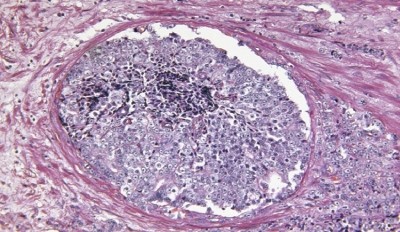Innovative Purdue research leads to FDA-approved prostate cancer treatment

According to the Centers for Disease Control and Prevention (CDC), prostate cancer ranks among the most insidious forms of the disease. It’s one of the leading causes of cancer deaths in men, and it has claimed the lives of such notable gentlemen as writer Langston Hughes and actor James Michael Tyler (aka Gunther on the beloved television sitcom Friends).
The US Food and Drug Administration (FDA) recently granted approval to 177Lu-PSMA-617, a new precision treatment that may offer hope for men diagnosed with advanced prostate cancer. Results from a Phase III study demonstrated the treatment (accompanied by normal standard of care) led to a 38% reduction in the risk of death compared with standard of care alone.
To learn more about the drug and the innovative research behind it, Outsourcing-Pharma recently connected with Philip Low, the Presidential Scholar for Drug Discovery and Ralph C. Corley Distinguished Professor of Chemistry in the Purdue University College of Science’s Department of Chemistry.
OSP: Could you please share your perspective on recent progress (or lack thereof, as the case may be) in diagnostics and treatments for prostate cancer?
PL: I am very encouraged by the recent progress towards better diagnosis and treatment of prostate cancer. Whereas malignant lesions have been difficult to image for many years, the advent of PSMA-11 and other PSMA-targeted PET imaging agents has enabled identification and imaging of prostate cancer lesions virtually anywhere in the body. And if there aren’t too many malignant nodules in any particular patient, the same technology can facilitate surgical resection of otherwise undetectable cancer tissue.
Regarding therapy, the FDA’s approval last week of 177Lu-PSMA-617 marks a major milestone in the treatment of prostate cancer, reducing the risk of death in metastatic castration-resistant prostate cancer patients by 38% and increasing progression-free survival from 3.4 to 8.7 months.
OSP: What have some of the challenges in developing more effective treatments for PC been?
PL: Major challenges in the management of PCa in the past have been both the diagnosis and staging of the cancer as well as the treatment of patients with metastatic disease. In general, after a metastatic cancer patient has stopped responding to androgen-suppressing therapies, few life-prolonging options have existed.
With the advent of 177Lu-PSMA-617, however, the probability of an extended lifespan significantly increases. Both advances are obviously good news to PCa patients.
OSP: Please share an overview of this new promising treatment, including how it works and why its approval is good news for PC patients and their families.
PL: Metastatic PCa is difficult to treat because it commonly metastasizes to bone at multiple distant sites throughout the body. 177Lu-PSMA-617 can treat this metastatic disease because it can seek out the cancer and then destroy it. That is, one part of the drug contains a homing component that selectively binds and enters the prostate cancer cells, regardless of their location in the patient.
A second part of the drug, which is tethered to the first, then delivers damaging radiation to these cells. In this manner, the killing radiation is largely limited to the cancer cells and healthy cells and tissues are largely spared collateral damage.
OSP: Could you talk about some of the minds at Purdue (and elsewhere) that contributed to the advancement of this PC treatment?
PL: Many labs have contributed to the development of this therapy. Many years ago several groups observed that PSMA was highly expressed on prostate cancer cells, suggesting that it might constitute a prostate-cancer-specific marker. Not long after, Pamela J. Bjorkman of the California Institute of Technology used x-ray crystallography to determine the molecular structure of PSMA.
One of my graduate students (Sumith Kularatne) and I (as well as Martin Pomper at Johns Hopkins University) then employed this structure to design small molecule targeting ligands that could bind with high affinity and specificity to PSMA, and we used these targeting ligands to deliver attached imaging agents specifically to prostate cancer tissues in both mice and humans. My lab then continued to exploit our PSMA targeting ligand to design other PSMA-targeted drugs, including optical imaging agents, PSMA-targeted chemotherapeutic drugs, and PSMA-targeted radiotherapies.
A group from Heidelberg Germany directed by Uwe Haberkorn then used a closely related PSMA-targeted radiotherapeutic agent to deliver 177Lu-PSMA-617 to malignant lesions in prostate cancer patients and demonstrated that the targeted cancer tissues diminished in size. A company that I founded and that had already licensed our PSMA-targeted radiotherapy patent from Purdue University (Endocyte Inc.) was then purchased by Novartis Inc. primarily for the purpose of obtaining rights to 177Lu-PSMA-617. Finally, Novartis completed the human clinical trials for 177Lu-PSMA-617 and obtained FDA approval on March 23, 2022, to market the radiotherapy.




















